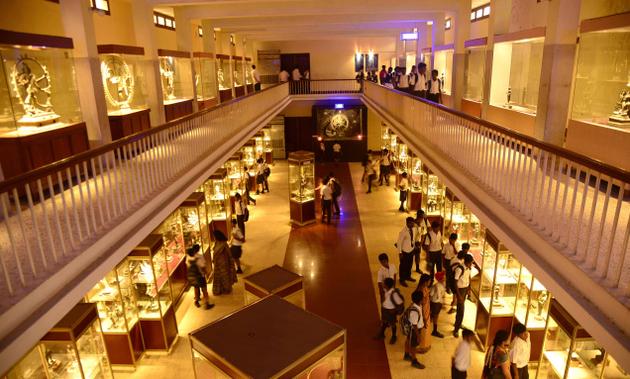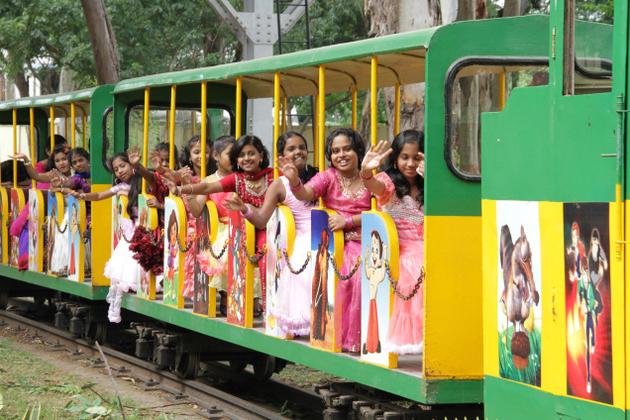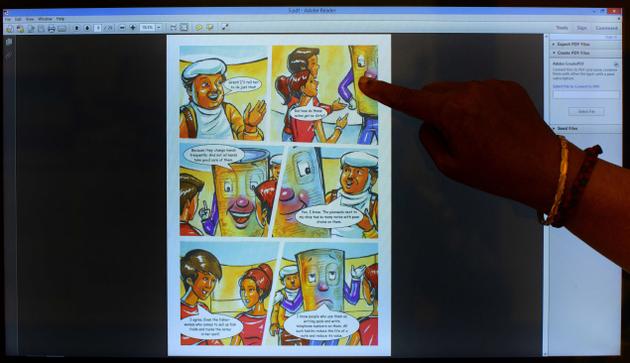
Come summer, and museums are spruced up to receive visitors ready to dip into a treasure trove of artefacts. But, museum-visiting must be made part of popular culture to create a generation familiar with its roots, writes SUBHA J RAO
It’s a searing 39 degrees and Anand Gopinathan’s T-shirt is plastered to his back. But, there’s a smile on his face as he walks from gallery to gallery at the Government Museum, Egmore, water bottle in hand. Kochi-based Anand, 45, is a compulsive museum-goer. He loves history, travels widely and makes it a point to visit the local museum, however small it may be. But, he has his favourites. “The Tower of London… I’ve visited it many, many times,” he says.
Elsewhere, reluctant children are being dragged from exhibit to exhibit by eager parents and patient teachers, as if to tick something off the bucket list. The children file past objects of exceptional beauty, little registering their historical worth.
So, how does one get children interested in museums? Or, even still, why must one visit museums? A senior Government employee, who’s served for a while in museums, puts it simply. “Museums are repositories of our history and culture. They bring alive a period that we can’t visit again. More importantly, at a time when the nuclear family has come to stay, oral retelling of history has taken a backseat. You need a museum to put facts in context for children. How else will they know where they come from?”
Another history-loving official says that museums also help put things in perspective. “We’ve learnt so little of our kings and kingdoms in history books. We call Samudragupta of the Gupta Empire the Napoleon of India. That’s terrible and a disservice, because he lived from 335-380 C.E., while Napoleon (1769-1821) came in much later. Samudragupta was the pioneer. And that’s something a museum will reveal with great clarity,” he says. Similarly, an entire generation looks up to the West for everything, little knowing the treasure trove of talent that we possess from the Indus Valley Civilisation.

Part of the problem why museums have become distant spaces, says Arun Devraj, Curator, Regional Rail Museum (RRM), Chennai, is because we have so many restrictions — Don’t touch this. Don’t walk on the grass. Don’t enter this place… Arun’s done away with all of them at the RRM. Children, who usually hold a deep fascination for trains, walk on the tender grass, at least whatever remains of it after being scorched by the summer sun, walk into the bogies in the bogie park, touch and feel the seats and upholstery and come out beaming. They then take a ride in a toy train, passing a park where the attractions are erstwhile coaches, including the iconic blue-white railbus that used to chug along on the Shimoga-Talaguppa section in Karnataka, covering 82 km in a leisurely three hours and 45 minutes.
Inside the museum are models of bogies on the floor, so that children can sit around them and peer into them as much, instead of being forced to bend down to see the models. When we visited, a group of children from Ambattur had come in, sweaty and tired. But all that seemed to vanish as they gathered around the model trains, moving away from them with great reluctance.
Museums must be interactive spaces to strike a chord with visitors believes Neeti Anil Kumar, Curator, Fort Museum at Fort St. George. The museum is currently hosting Kesh Vinyasa, an interesting exhibition that showcases hair dressing down the ages. Dreadlocks, Asha Parekh-style top buns, hair parted on the side and decorated with beads… all of them seem familiar, and then Neeti reveals their origin — the Gupta period. She then points out to a Vijayanagar-era sculpture from Srimushnam, a lady with plaited, long hair decorated with flowers — the traditional poo jadai that a South Indian bride still wears. “But, this alone won’t do to bring in people. And so, to move with the times, we’ve put in two selfie booths,” she says. A majestic Samrat Asoka and a decked-up Begum Hazrat Mahal have been placed in the centre of the gallery. Place your face in the gap provided, and click away.
In the coins’ gallery, innovation rules. The museum offers an augmented-reality experience. Children and adults stand in front of a screen and hold a cardboard sheet. Suddenly, a coin zooms into view, and turns around slowly to show you its intricate beauty. This is a huge hit among kids, says the person manning this section. “Earlier, these exhibits were only under lock and key, ensconced in glass shelves. You could never see them up close and personal,” says Neeti. Likewise, at the entrance of the museum, there’s a talking cannon. In a seven-odd-minute speech, it speaks about how it came into being, where it was used, and why it went out of favour. And then, it goes on to promote peace and ahimsa. Children listen spellbound, because it is self-explanatory and in lucid language.

A touch screen with games and puzzles and financial comics such as Raju and the Money Tree make the experience worthwhile at the Financial Gallery of the Reserve Bank of India. It is a space that promotes financial literacy, financial inclusion and customer protection. This place is an eye-opener for children and adults alike. The audio-visual section plays a selection of videos, including an interesting one on how mutilated and unusable rupee notes are destroyed. And, making the experience come alive, D. Vinothini, Assistant Manager, who looks after the gallery, shows us a briquette — a cylindrical brick made of shredded rupee notes! Every child leaving the museum is also given a small pouch with shredded notes.

If all these museums promote a sense of enquiry, the one at the Officers Training Academy (OTA) inspires. It is a wonderful showcase of what the OTA, founded in 1963, stands for, and has a gem of a collection of weapons used in warfare. As you file past panels listing the achievements of the Academy, your heart swells with pride, and then almost immediately, turns sombre as you go through the list of Param Vir Chakra and Ashok Chakra awardees from the Academy. As you read the plaques detailing the bravery of every awardee, especially those awarded posthumously, your eyes mist over and you’re consumed by a fierce sense of devotion towards the country.
In a sense, that’s the purpose of the museum — it must inspire both officers in the making and those visiting, says Major Avinash Rawal, Officer-in-Charge. As he walks you around, he points out with pride the officers who’ve passed out of the OTA and proved their mettle in various theatres of war. This is, in effect, modern history. And, the museum places it in great perspective for future generations.
source: http://www.thehindu.com / The Hindu / Home> Features> MetroPlus / by Subha J. Rao / Chennai – April 15th, 2016